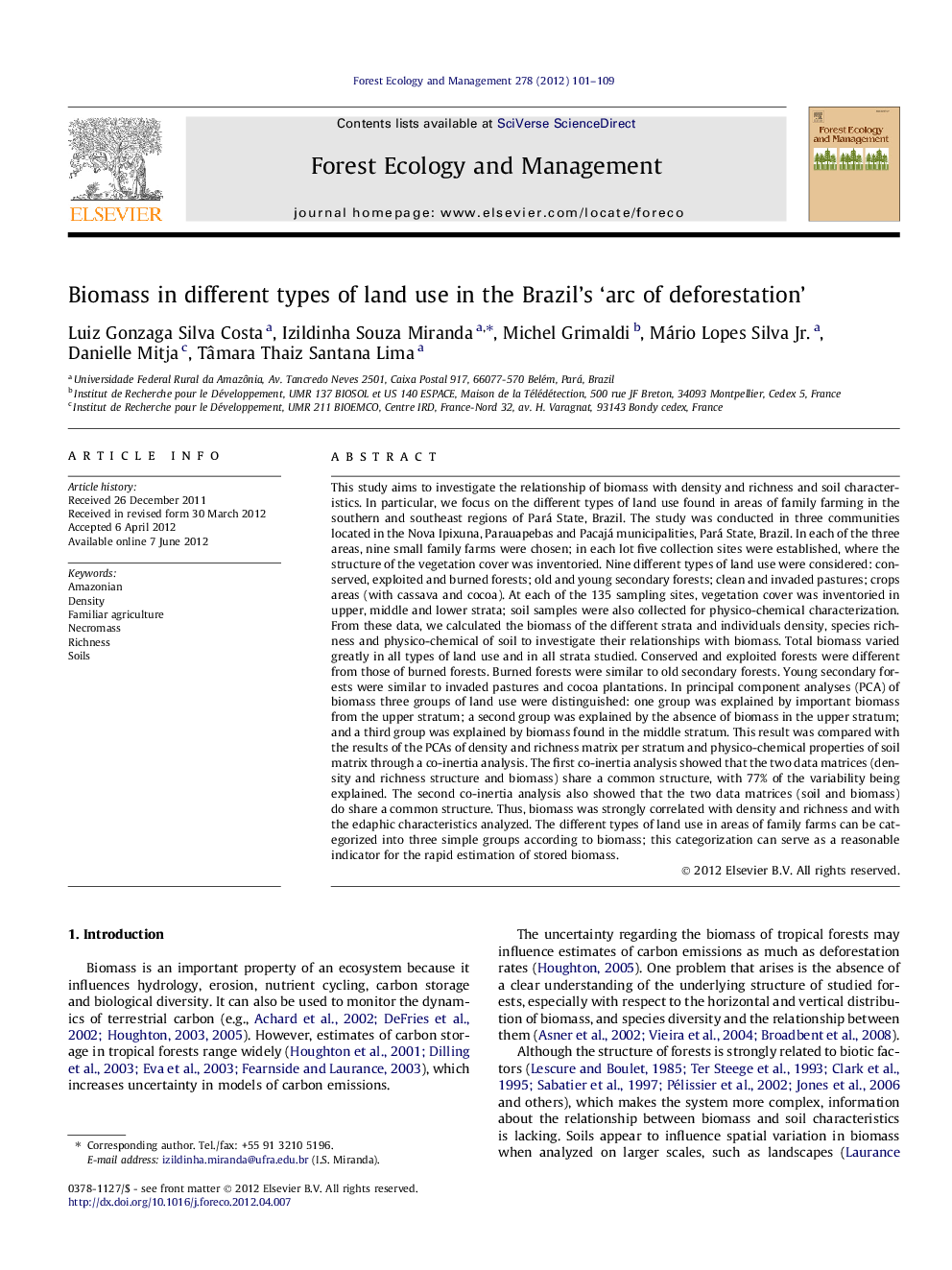| کد مقاله | کد نشریه | سال انتشار | مقاله انگلیسی | نسخه تمام متن |
|---|---|---|---|---|
| 87243 | 159240 | 2012 | 9 صفحه PDF | دانلود رایگان |

This study aims to investigate the relationship of biomass with density and richness and soil characteristics. In particular, we focus on the different types of land use found in areas of family farming in the southern and southeast regions of Pará State, Brazil. The study was conducted in three communities located in the Nova Ipixuna, Parauapebas and Pacajá municipalities, Pará State, Brazil. In each of the three areas, nine small family farms were chosen; in each lot five collection sites were established, where the structure of the vegetation cover was inventoried. Nine different types of land use were considered: conserved, exploited and burned forests; old and young secondary forests; clean and invaded pastures; crops areas (with cassava and cocoa). At each of the 135 sampling sites, vegetation cover was inventoried in upper, middle and lower strata; soil samples were also collected for physico-chemical characterization. From these data, we calculated the biomass of the different strata and individuals density, species richness and physico-chemical of soil to investigate their relationships with biomass. Total biomass varied greatly in all types of land use and in all strata studied. Conserved and exploited forests were different from those of burned forests. Burned forests were similar to old secondary forests. Young secondary forests were similar to invaded pastures and cocoa plantations. In principal component analyses (PCA) of biomass three groups of land use were distinguished: one group was explained by important biomass from the upper stratum; a second group was explained by the absence of biomass in the upper stratum; and a third group was explained by biomass found in the middle stratum. This result was compared with the results of the PCAs of density and richness matrix per stratum and physico-chemical properties of soil matrix through a co-inertia analysis. The first co-inertia analysis showed that the two data matrices (density and richness structure and biomass) share a common structure, with 77% of the variability being explained. The second co-inertia analysis also showed that the two data matrices (soil and biomass) do share a common structure. Thus, biomass was strongly correlated with density and richness and with the edaphic characteristics analyzed. The different types of land use in areas of family farms can be categorized into three simple groups according to biomass; this categorization can serve as a reasonable indicator for the rapid estimation of stored biomass.
► We investigate the vertical distribution of biomass of different land use types.
► We established the relationship between biomass with vegetation and soil.
► Upper and middle strata were explained in the vertical distribution of biomass.
► Necromass was important compartment of clean pastures and cultivation areas.
► The structure of biomass was similar to structure of vegetation and soil.
Journal: Forest Ecology and Management - Volume 278, 15 August 2012, Pages 101–109